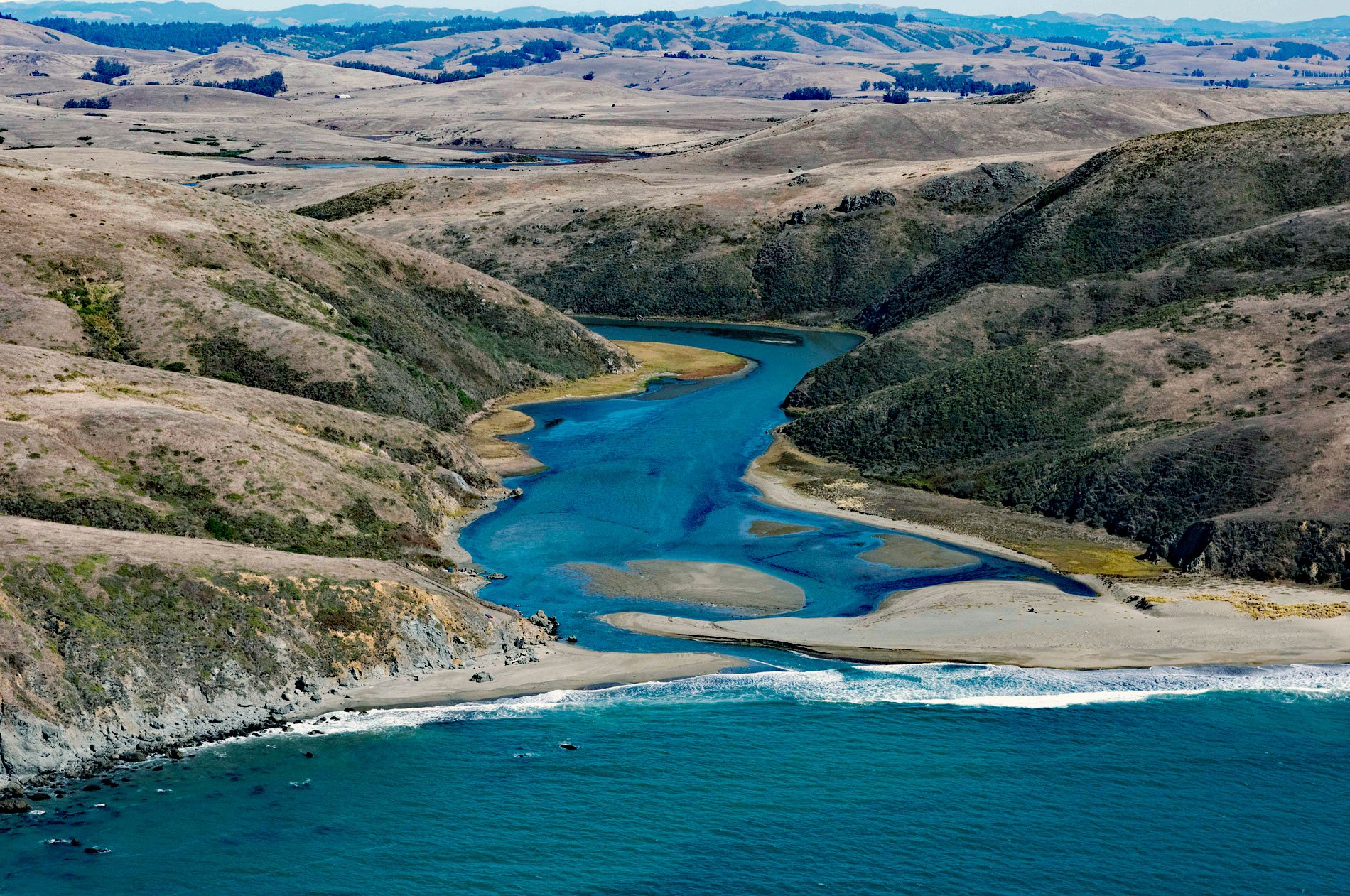Estero Americano is an estuary about 4 miles (6.5 km) long that connects to Bodega Bay and is fed by Americano Creek that starts at an elevation of roughly 250 feet (76 m) in the coastal hills of Sonoma and Marin Counties and flows west for 11 miles (18 km) draining a watershed of 24,277 acres (9,825 ha), about 19 miles (31 km) southwest of Santa Rosa and 3.7 miles (6 km) northwest of Dillion Beach, California. Americano Creek is dry for 4 to 6 months each year. The stream meanders through a broad valley dominated by agricultural uses, principally cattle grazing, and is underlain by rocks of the Wilson Grove Formation that developed during the Late Miocene to Pliocene and consists of marine sandstone and conglomerate. Most of the estuary is underlain by rocks of the Franciscan Complex mélange that consist of a chaotic mixture of fragmented rock masses in a sheared shaly matrix. Within the estuary, these rocks are buried underneath estuarine sediments deposited during the Holocene and include silt and clay with interbedded layers of peat and woody debris.
Two Coast Miwok villages were historically located on Estero Americano. Uli-yomi was at the head where the creek enters the estuary at present-day Valley Ford, and Awachi was at the mouth of Bodega Bay. At the time of the Russian colony at Fort Ross from 1812 to 1841, Americano Creek was known as the Avacha River. At the direction of Alta California Governor José Figueroa in 1835, Mariano Guadalupe Vallejo began construction of the Presidio of Sonoma to counter the Russian presence at Fort Ross. To extend settlements in the direction of Fort Ross, Vallejo sent three ‘Americano’ settlers, Edward McIntosh, James Black, and James Dawson. Black settled upon what is now known as Rancho Cañada de Jonive, while Dawson and McIntosh settled upon Rancho Estero Americano and raised cattle.
Today, much of the Estero Americano is designated as an impaired stream due to runoff from pasture land and feedlots. In some years this condition is exacerbated when a sand bar forms at the mouth of the estuary that restricts tidal flushing, otherwise tidal circulation extends 4 miles (6.5 km) upstream. The estuary supports marshes and marine invertebrates that are critical for seabirds and fish habitat. The Estero Americano is protected by the Estero Americano State Marine Recreational Management Area, which protects marine life and helps conserve marine ecosystems and is one of 22 marine protected areas adopted by the California Department of Fish and Game as part of the Marine Life Protection Act Initiative. This was a collaborative public process that included local divers, fishermen, conservationists, and scientists. They were tasked with designing a network of protected areas that would preserve sensitive sea life and habitats while enhancing recreation, study, and education opportunities. The north-central coast marine protected areas took effect in 2010. Read more here and here. Explore more of Estero Americano and Bodega Bay here:

